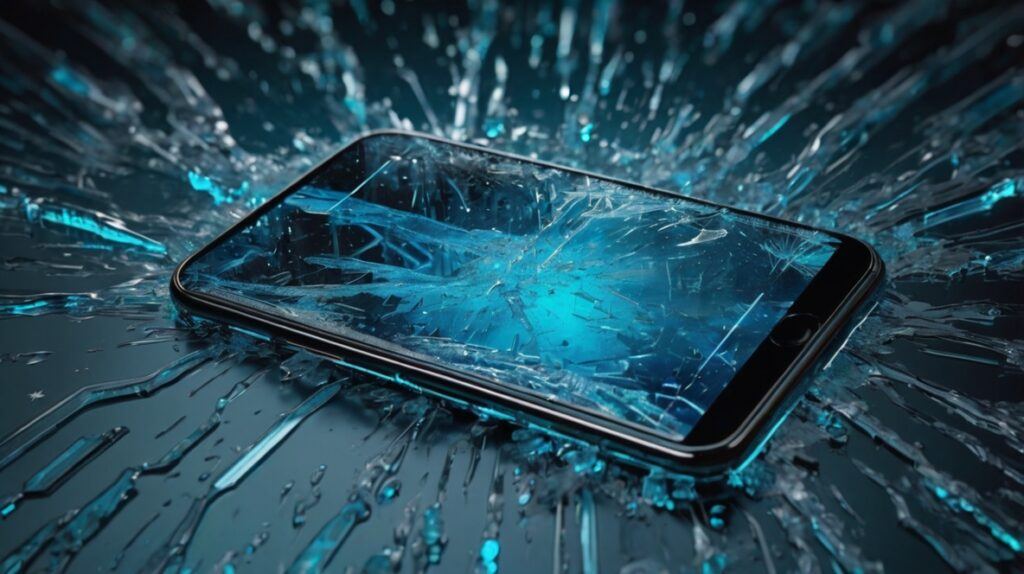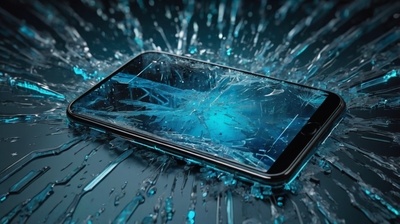
Troubleshooting the Android Black Screen: A Comprehensive Guide to Fixing Unresponsive Devices
Is your Android phone suddenly acting like a brick, displaying a black screen, or stubbornly refusing to respond to your touches? This is a frustrating experience many Android users face, regardless of whether they own a Samsung, OnePlus, Sony, LG, Motorola, Razer, RedMagic, Asus, Oppo, Lenovo, or Xiaomi (Mi) device. An unresponsive screen can feel like the end of your digital world, but often, the solution is simpler than you think. This comprehensive guide will walk you through expert-level troubleshooting steps, from basic fixes to more advanced solutions, ensuring you can revive your device and avoid costly repairs. We’ll delve into common causes, preventive measures, and practical solutions to get your Android phone back in working order.
Understanding the Dreaded Unresponsive Screen
Before diving into solutions, it’s crucial to understand why your Android device’s screen is not responding. This issue can stem from various sources, broadly categorized into software glitches, hardware malfunctions, or even external factors. Identifying the potential cause can help you pinpoint the most effective troubleshooting path.
Common Causes of an Unresponsive Android Screen:
- Software Crashes or Freezes: Applications can sometimes crash, leading to the entire operating system freezing and rendering the screen unresponsive. This is a very common culprit.
- Operating System Bugs: Updates or background processes can introduce bugs that interfere with screen functionality.
- Low Memory or Storage: When your device runs out of RAM or internal storage, it can struggle to perform basic functions, leading to slowdowns and unresponsiveness.
- Corrupted Cache Data: Over time, cached data can become corrupted, affecting app performance and system stability.
- Overheating: Prolonged heavy usage, especially with demanding games or multiple apps running, can cause your phone to overheat, leading to performance issues and screen unresponsiveness as a protective measure.
- Physical Damage: Drops, impacts, or exposure to liquids can damage internal components, including the display connector or the digitizer (the part that registers touch).
- Faulty Apps: A recently installed or updated app might be poorly optimized or contain bugs that conflict with your device’s system.
- Outdated Software: Running an older version of Android can expose your device to known bugs and compatibility issues that newer versions have patched.
- Hardware Malfunctions: Beyond physical damage, internal components like the display assembly, motherboard, or battery can fail over time.
- Charger or Battery Issues: A faulty charger or a degraded battery can lead to insufficient power, causing your device to behave erratically or appear unresponsive.
Initial Steps: The Quick Fixes
When faced with an unresponsive screen, don’t panic. Start with these simple yet often effective troubleshooting steps.
1. The Force Restart (The Universal Fix)
This is the first and most crucial step. A force restart can clear minor software glitches and refresh your device’s operating system without affecting your data. The method varies slightly between manufacturers:
- Most Android Devices (Samsung, OnePlus, Xiaomi, Oppo, etc.): Press and hold the Power button and the Volume Down button simultaneously for 10-20 seconds.
- Older Samsung Devices: Press and hold the Power button, Volume Down button, and Home button simultaneously until the Samsung logo appears.
- Motorola, LG, Sony: Typically involves holding the Power button for an extended period (around 10-20 seconds).
If your screen becomes responsive after a force restart, ensure you save any unsaved work immediately.
2. Check for Physical Damage and Loose Connections
Visually inspect your device for any signs of physical damage, such as cracks on the screen, dents on the casing, or moisture indicators. If you recently dropped your phone or it was exposed to water, physical damage is a strong possibility. While you can’t fix internal damage yourself, knowing it’s there can help you explain the issue to a professional.
3. Remove External Accessories
Sometimes, a faulty case, screen protector (especially thick or poorly applied ones), or even a connected USB device can interfere with touch input. Remove all external accessories and test your screen again. This step is particularly important for devices like the Razer Phone or RedMagic phones, which often use specialized gaming accessories.
4. Charge Your Device
A completely drained battery might make your phone appear unresponsive. Plug your device into a reliable charger and a working power outlet. Leave it to charge for at least 30 minutes before attempting to power it on again. Look for a charging indicator on the screen or an LED light. If the screen remains black, try a different charger and cable, as these can also be faulty. Brands like Anker, RAVPower, and Belkin offer high-quality charging accessories.
Intermediate Solutions: Diving Deeper into Software
If the initial steps don’t resolve the issue, it’s time to explore software-related solutions.
5. Boot into Safe Mode
Safe Mode starts your Android device with only essential system apps, disabling all third-party applications. This is an excellent way to determine if a recently installed app is causing the unresponsiveness.
How to Enter Safe Mode:
- Method 1 (Most Devices): Press and hold the Power button until the “Power off” option appears. Tap and hold “Power off” until a prompt to “Reboot to Safe Mode” appears. Tap “OK.”
- Method 2 (If Method 1 Fails): Power off your phone. Press and hold the Power button until the manufacturer’s logo appears, then immediately release the Power button and press and hold the Volume Down button until the device boots into Safe Mode. You’ll see “Safe Mode” displayed at the bottom of the screen.
Once in Safe Mode, if your screen is responsive, you can deduce that a third-party app is the culprit. Identify and uninstall recently installed apps one by one, then restart your phone normally to check if the issue is resolved.
6. Clear Cache Partition
Corrupted cache data can lead to various system malfunctions, including an unresponsive screen. Clearing the cache partition can often resolve these issues without deleting your personal data.
How to Clear Cache Partition (requires booting into Recovery Mode):
- Power off your device completely.
- Boot into Recovery Mode. The key combination varies by device:
- Samsung: Power + Volume Up + Home Button (for older models) or Power + Volume Up (for newer models).
- OnePlus, Xiaomi, Oppo, etc.: Power + Volume Up or Power + Volume Down (you might need to try both combinations).
- Motorola, LG, Sony: Often involves Power + Volume Down.
- Once in Recovery Mode, use the Volume buttons to navigate and the Power button to select.
- Select “Wipe cache partition.” (DO NOT select “Wipe data/factory reset” unless you intend to erase all your data).
- Confirm the action.
- Once complete, select “Reboot system now.”
7. Update Your Android Software
Outdated software can be a source of bugs and security vulnerabilities that affect screen performance. If your screen becomes temporarily responsive, or if you can access settings through another method (like connecting to a computer or using voice commands if available), try to update your Android operating system. Go to Settings > System > Software Update (or similar path) to check for and install any available updates.
Advanced Solutions: When All Else Fails
If your screen remains unresponsive after trying the above steps, you might need to consider more drastic measures or professional help.
8. Factory Reset (Last Resort for Software Issues)
A factory reset will erase all data on your device, including apps, photos, videos, and settings, returning it to its original factory state. This should only be considered if you have exhausted all other software troubleshooting options and suspect a deeply rooted software issue.
Important: Backup your data if you can before performing a factory reset. If your screen is completely unresponsive, backing up might be impossible.
How to Perform a Factory Reset (from Recovery Mode):
- Power off your device.
- Boot into Recovery Mode (refer to step 6 for key combinations).
- Using the Volume buttons to navigate and the Power button to select, choose “Wipe data/factory reset.”
- Confirm the action when prompted.
- Once the reset is complete, select “Reboot system now.”
9. Seek Professional Repair
If none of the above solutions work, it’s highly likely that your device has a hardware problem. This could include a faulty display assembly, a damaged digitizer, an issue with the motherboard, or a degraded battery that can no longer supply sufficient power. At this point, it’s best to contact your device manufacturer’s support or take your phone to a certified repair center. Explain the steps you’ve already taken to help them diagnose the issue more efficiently. Many independent repair shops also specialize in Android phone repairs.
Preventive Measures to Avoid Future Unresponsive Screens
An ounce of prevention is worth a pound of cure. By adopting good habits, you can significantly reduce the chances of encountering an unresponsive screen again.
- Regularly Update Your Software: Keep your Android OS and all your apps updated to their latest versions. Developers frequently release updates to fix bugs and improve performance.
- Manage Your Storage: Avoid filling up your phone’s internal storage completely. Aim to keep at least 15-20% of your storage free for optimal performance. Regularly clean up unnecessary files, photos, and videos.
- Clear App Caches: Periodically clear the cache data for individual apps that you use frequently. You can do this in Settings > Apps > [Select App] > Storage > Clear Cache.
- Use a Quality Screen Protector and Case: Protect your device from physical damage. A good screen protector (like those from Zagg, Whitestone Dome, or InvisibleShield) and a robust case (Otterbox, Spigen, Urban Armor Gear, Caseology Cases, Fort Case) can absorb impacts and prevent screen damage.
- Avoid Overheating: Don’t use your phone for extended periods in direct sunlight or while charging, especially during demanding tasks. Close background apps and take breaks during intense gaming sessions.
- Install Apps from Trusted Sources: Only download apps from the Google Play Store or other reputable sources to avoid malicious or poorly coded applications.
- Monitor Battery Health: If your phone’s battery is old and consistently draining quickly, it might be time for a replacement. A faulty battery can lead to unstable system behavior.
- Consider a Robust Affiliate Marketing Platform: For those interested in technology and looking to generate income, platforms like Wealthy Affiliate provide excellent training and tools for building online businesses, including blogs focused on tech troubleshooting and reviews. You can learn how to create engaging content and effectively monetize your passion for Android devices and accessories. Through such platforms, you can transform your technical knowledge into a valuable resource for others and generate revenue.
Conclusion
An unresponsive screen on your Android device is a significant inconvenience, but it’s often a fixable problem. By systematically working through the troubleshooting steps outlined in this guide—from simple restarts and physical checks to safe mode diagnostics and, if necessary, a factory reset—you stand a good chance of resolving the issue yourself. Remember to always back up your data where possible and consider professional repair services if hardware damage is suspected. With proper care and timely troubleshooting, your Android device can continue to serve you reliably for years to come.

